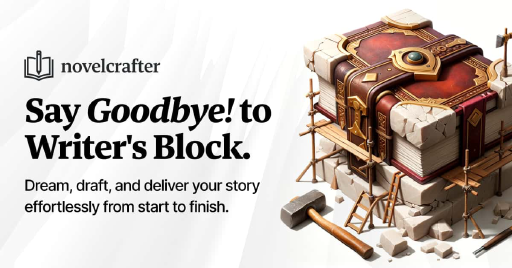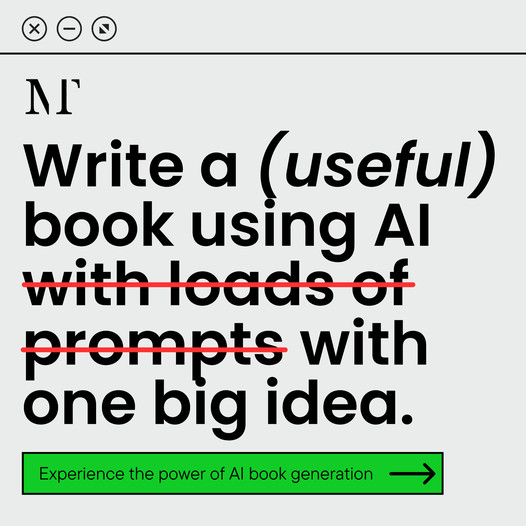Unlocking Your Creative Potential
The Magic of Writing Exercises
Yep, writing exercises—they’re your ticket to unlocking creativity and letting your voice do its thing. Regular writing practice polishes your skills, lets you go wild with ideas, and smashes through any roadblocks you face. Structured exercises? They’re like a treasure map showing new paths to explore and keeping those creative juices flowing.
Writing exercises? They bring some serious perks to the table that’ll up your writing game. Here are the goodies:
| Perks of Writing Exercises | What They Do |
|---|---|
| Skill Sharpening | Keep practicing, and you’ll see your skills get sharper, turning you into a pro with the pen. |
| Idea Ignition | Stuck for ideas? These exercises light up new paths and wave goodbye to writer’s block. |
| Creativity Power-Up | Diverse exercises kickstart your brain’s creative mode, working wonders for problem-solving, too. |
| Focus Boost | Dedicating time to exercises helps you zero in on tasks and dive into productivity land. |
How Writing Exercises Fire Up Your Creativity
Writing exercises are like the caffeine shot your creativity needs. They push you out of the comfort zone, sparking new styles and perspectives. Here’s how they shake things up:
- Seeing Through New Lenses: Trying out unfamiliar prompts or formats lets you see your work in a whole new light.
- Playful Vibes: These exercises embrace a fun, experimental mindset, which is liberating—forget about seeking perfection.
- Ditching the Rules: They often come without strings attached, encouraging free expression minus the self-doubt. Let your real creative self out to play.
- Setting Habits: Make these exercises a part of your routine, and watch a consistent writing habit bloom, reinforcing creativity. If sorting out a lasting routine is your jam, here’s more on building a writing routine.
Making writing exercises a part of your life can shake up how you view creativity. They’re your trusty sidekick to unveiling fresh ideas, diving into new characters, and dreaming up plots you never thought possible. If things are feeling a bit meh, don’t hesitate to bring these exercises into your world. The payoff? Creativity like you wouldn’t believe. For more wisdom nuggets, peek at tips to supercharge your writing skills.
Brainstorming Exercises
Getting the creative juices flowing can seriously step up your writing game. Let’s look at two practical exercises: freewriting and mind mapping. They’re both about sparking fresh ideas and pushing that brain of yours into gear.
Freewriting Session
Freewriting is that no-rules-just-go kind of exercise. You keep writing—no stopping for grammar or spelling. It helps shake loose those pesky mental blocks and gets ideas rolling.
How to Freewrite:
- Grab a timer and set it for 10-15 minutes.
- Pick a topic, or just start with whatever’s on your mind.
- Write non-stop—skip editing or overthinking.
- When the timer buzzes, give it a read-over. Highlight anything cool.
Why Freewriting Rocks:
- Pumps out ideas like a machine
- Shelves that inner critic
- Brings out thoughts you didn’t even know you had
Mind Mapping Technique
Mind mapping is your doodle-on-steroids for brainstorming. It’s like creating a map of ideas you didn’t know were connected. You get to draw lines, use colors, and really see how it all fits together.
How to Create a Mind Map:
 What Poetry Feels Like
What Poetry Feels Like- Slam down your main idea in the center of a page.
- Branch out with anything related—use lines to tie them to the main.
- Keep branching with more ideas. Use snappy words or short phrases.
- Jazz it up with colors and drawings—it’s more fun and helps you remember stuff.
Check out this simple mind map layout:
| Central Idea | Related Ideas | Further Details |
|---|---|---|
| Writing Exercise Ideas | Freewriting | Timed session |
| Mind Mapping | Visual organization | |
| Brainstorming Techniques | Creativity boost |
Why Mind Mapping is Awesome:
- Gets you digging deep into ideas
- Lays out your thoughts in a snap
- Makes connections jump out
These exercises not only whip up ideas but can also slot right into your strategy for turbocharging your writing skills. Give them a whirl and see how they can shake up your routine and boost creativity.
Character Development Activities
Creating characters is like building your own universe. Dive into these two fun exercises—character interviews and role reversals—that’ll help you build characters your readers can actually care about.
Character Interviews
Ever wondered what’s ticking away in your character’s mind? Conducting interviews with them helps you dig into their world—what they’re scared of or dreaming about. Let’s walk through how to interview your character:
- Make Your Questions: Scribble down some interesting queries to explore your character’s life, like:
- What scares you the most?
- What dreams keep you up at night?
- Can you recall a moment that changed you forever?
-
Be Them: Answer the questions as if you’re stepping into their shoes, adopting their feelings and thoughts.
-
Jot It Down: Write down all your answers. It’s like creating a diary they’ll never read.
| Question | Sample Character Response |
|---|---|
| What scares you the most? | “Losing my family; they keep me grounded.” |
| What dreams keep you up at night? | “Owning a bakery that everyone in the neighborhood loves.” |
| Recall a moment that changed you forever. | “The day I saved my brother from drowning taught me I could conquer my fears.” |
Getting this close to your characters can spark authentic dialogues and growth within your story. Want more on shaping characters? Swing by our piece on how to develop characters in a story.
Character Role Reversal Exercise
Role reversal is all about swapping characters’ spots and figuring out how they’d deal with each other’s baggage. Ready for something different? Here’s how you do it:
-
Pick Your Pair: Choose two of your characters with opposing vibes or roles.
-
Set the Scene: Select a tricky plot moment for them.
-
Flip the Script: Reimagine the scene from each character’s viewpoint:
- How would they act?
- What different paths might they choose?
- How might their pasts change their decisions?
| Character | Original Response | Reversed Response |
|---|---|---|
| Character A | “I’ll face the enemy directly.” | “Better to snoop first.” |
| Character B | “I’ll talk our way out.” | “Fighting shows strength.” |
Not only will this give you a better understanding of your characters, but it could also lead to surprises and fresh writing ideas. For more on sparking those creative juices, look at our tips on how to improve writing skills.
Playing with these character-building exercises can breathe life into your stories. Whether you’re chatting with your characters or flipping their scripts, you’ll dig deeper into who they really are and what makes them tick.
Setting and Description Prompts
Good descriptions and lively settings pull your readers into your story like a magnetic force. Let’s jazz up your descriptive mojo and stir up some vivid settings for your tales.
Sensory Adventures
Dive into the world of your senses to make settings pop. Pick a place – maybe it’s a chaotic market or a peaceful forest. Now, close those peepers and let your senses take the wheel. What do you see? Hear? Smell? Taste? Feel? Jot down your thoughts and capture the essence of this place.
| Sense | Description Ideas |
|---|---|
| Sight | Vibrant colors, twilight gloom, hustle and bustle |
| Sound | Gossip, leaves whispering, far-off tunes |
| Smell | Bread fresh out the oven, earthy, blooming flowers |
| Taste | Hint of sweetness, metallic buzz, salty breeze |
| Touch | Chill of the wind, gritty textures, sun’s warm hug |
Sprinkling these details throughout your scenes will transport folks right into your story’s world. For extra tips, check out our piece on tips for writing descriptive scenes.
Mix It Up: Time and Place
For a fun twist, pick a famous scene from a book or film and plunk it into a different era and setting. Like, what if “Pride and Prejudice” happened in today’s bustling city or a messed-up future?
Here’s how to do it:
- Grab a classic scene.
- Flip the time zone (Victorian days to now).
- Change the setting (quaint English village to a jam-packed city).
- Write a quick paragraph on how this new world changes how characters act and interact.
This activity pushes you to think differently about how settings can shake up a story. It might even spark new ideas for your own tales. For more inspiration, sneak a peek at writing prompts for beginners.
By playing with these setting and description cues, you’ll sharpen your storytelling smarts and craft gripping worlds that captivate your readers’ imaginations.
Plot Twists and Challenges
Tossing in some wild plot twists and fun challenges can really pump up your storytelling game. Let’s dive into a couple of exercises that can boost your creative juices and spark some new ideas.
“What If” Scenarios
“What If” scenarios are like magic potions for your imagination. They let you experiment with different paths your story or characters might take. Just ask yourself things like, “What if my hero totally blew it?” or “What if the bad guy was actually the hero’s long-lost brother?” This can lead to unexpected twists that’ll keep your readers hooked.
Come up with at least five “What If” questions. Here’s a quick table to get those creative wheels turning:
| What If Scenario | Possible Outcomes |
|---|---|
| What if the hero loses their memory? | They might discover their true identity or realize they’re causing the chaos |
| What if kids run the world? | Adults could end up obeying kids, or surprising partnerships might form |
| What if time travel is real? | History might see some tweaks, or relationships might get all tangled up |
| What if the main character is actually a villain? | The story might flip script, or readers might find themselves rooting for the baddie |
| What if magic sneaks into everyday life? | Secret societies might pop up, or regular life could turn into a circus |
Use this table to start fleshing out ideas. It’s a great way to spice up your storylines and boost your writing chops. Want more tips? Check out our handy article on how to improve writing skills.
Random Element Generator
A random element generator can throw in some surprise elements and add new flavor to your story. Pick some random character traits, settings, conflicts, or themes, and see how you can mix them into your plot.
Peek at this table for how to pick random story elements:
| Element Type | Random Element |
|---|---|
| Character Trait | Afraid of the dark |
| Setting | Deserted amusement park |
| Conflict | A friend’s betrayal |
| Theme | Second chances |
| Object | A mysterious key |
To make this work, roll a die, pull names from a hat, or use an online random picker. Once you’ve got your elements, roll up your sleeves and write a scene with them in mind. This exercise helps you get better at weaving new threads into your story. Need more sparks of creativity? Head over to our article on writing prompts for beginners.
Trying out these exercises can fan the flames of your imagination and sharpen your writing chops. Keep challenging yourself with these tricks to keep your storytelling exciting and fresh.
Freestyle Writing Prompts
Freestyle writing prompts crack open a window to your imagination and let your thoughts run wild. Whether you dream in colors or hear stories in dialogues, these prompts will nudge you out of the usual, putting your creativity into overdrive. Let’s check out two kinds of prompts to get those creative juices flowing: image-based and dialogue-driven.
Image-Based Prompts
Pictures aren’t just a thousand words; they’re a million ideas! Pick an image that speaks to you—maybe it’s a snapshot from a forgotten era, a bold painting, or a whimsical illustration. Let it become the launchpad for your unique story.
| Things to Think About | Spark of Ideas |
|---|---|
| What’s Happening? | Weave a tale about a girl lost in thought at a train station. |
| Feelings | Paint the turmoil of a stormy night with your words. |
| Colors in Play | Dance with the blues in a sad, sweet poem. |
| Place | Get swept up in a noisy bazaar’s buzz. |
Zero in on the mood and magic in your chosen image, cranking up the emotion. Need more prompt ideas? Hop over to our piece on writing prompts for beginners.
Dialogue-Driven Prompts
A good chat can breathe life into characters, letting their true selves peek through. Kick off with a scene and let the characters’ voices drive the action.
| What’s Going On? | Imagine the Conversation |
|---|---|
| A Rough Patch | “I can’t believe you crossed that line.” |
| A First Date | “What’s your dream weekend getaway?” |
| Family Tension | “We’ve got to talk about the dinner fiasco.” |
| Surprise Meetup | “Is this real? After all these years?” |
Capture the distinct voices of your characters, revealing their history, desires, and emotions in every word. For more on bringing dialogue to life, dig into our guide on how to write compelling dialogue.
These freestyle writing exercises sharpen your pen and widen your creative horizon. For more tips, check out our articles on how to improve writing skills and writing tips for fiction authors. Keep writing, keep dreaming!

 Grab my poetry book, 'we're all just wanderers in the end' Here
Grab my poetry book, 'we're all just wanderers in the end' Here AD: Your Book Finally Written...
AD: Your Book Finally Written...